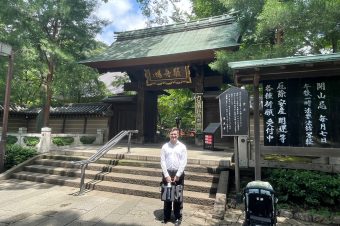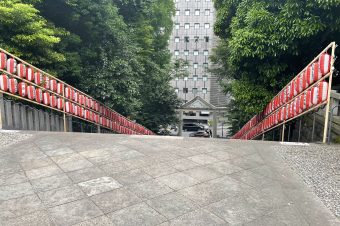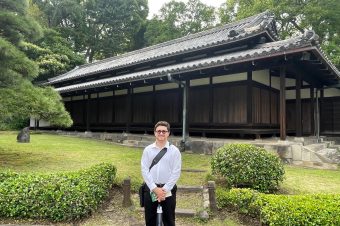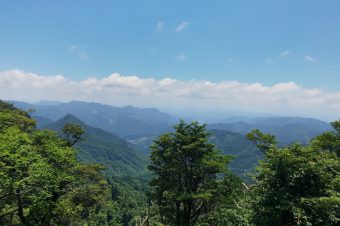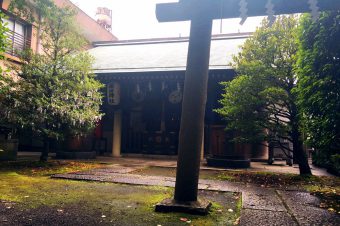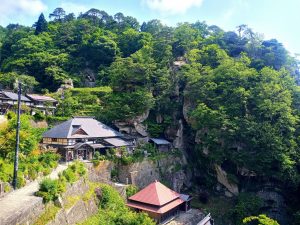
While I was in Miyagi Prefecture, I heard about a temple in the sky called Rissyakuji Temple in a neighboring prefecture, Yamagata Prefecture. The Rissyakuji Temple is also called Yamadera which literally translates to “mountain temple,” and after walking up over a thousand steps, I could understand why.
This temple was founded in the year 860 as a temple of the Tendai sect. It took me around 30 minutes to walk to the top, but it was well worth the hike, and you cannot drive up there. Aside from the trains arriving and departing to and from Yamadera station, there is a lovely absence of sound in this town; it is quite peaceful and should be cherished.
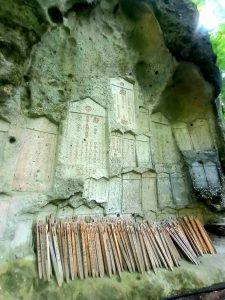
The foot of this temple’s mountain is about a five minute walk from Yamadera Station, and it costs 300 yen to begin hiking up. There are plenty of tombstones, statues and stone lanterns to look at along the way. There is even a mountainside which you can gouge coins into; some of the coins were in incredibly high places which begs the question of how did someone even get it up there?
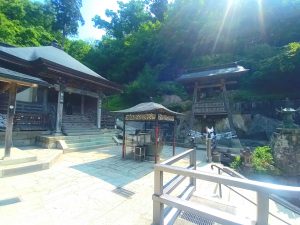
Actually, the whole temple brings to wonder how hard the people must have worked to bring all the materials to the top of the mountain and build this temple. It is not a simple task to walk up this mountain while holding nothing, but to carry a large statue of Buddha all that way sounds miserable. You can still buy talismans, amulets, knickknacks, etc. You can even get your fortune told for a mere 100 yen.
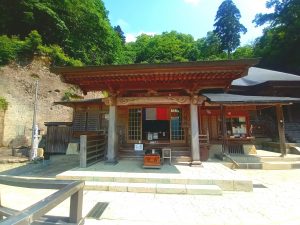
Inside the daibutsu-den hall there is a huge, golden Buddha statue. There were signs which read, “Photography is forbidden.” So, respectfully, I did not take any photos of the internals of the daibutsu-den hall. Please go to the actual location to see more! I really wonder how it was possible to put such a big Buddha inside of this hall?! It really is a mystery!
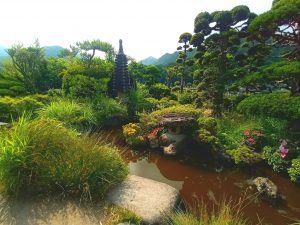
This temple is known for being visited by Matsuo Basho, one of the greatest Japanese poets to have ever lived. He traveled all across Japan, writing haiku and living his best life. During the time he traveled there, he wrote a famous haiku, titled “Oku no Hosomichi.”
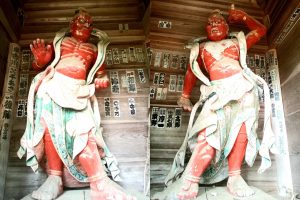
This temple also had Nio guardians which protect Yamadera from evil spirits. Their names are Ungyō (on the left) and Agyō (on the right). These two guardians are said to represent life and death, the beginning and the end. If I needed protecting, I know I would sure like to have those two on my team.
The one whose mouth is open is said to scare off the demon, while the one whose mouth is closed is said to shelter the good spirits. This is much like a sports team, how some players are offensive while the others are defensive. One needs good offense and defense in order to build a great team.
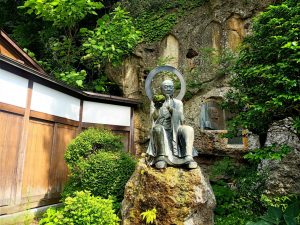
Here is a beautiful Luohan statue (Luohan is the Sixteen Arhats), perched on a rock in complete meditation. An arhat is a Buddhist disciple who has remained in this world to protect Buddhist teachings and save all people.
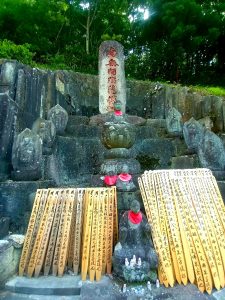
Here is a statue of Buddha I was allowed to photograph. The Buddha statue is surrounded by other statues and sotoba. A sotoba is a pagoda-shaped wooden tablet set up by the tomb, on which phrases from a sutra or the like are written for the repose of the soul of the deceased.
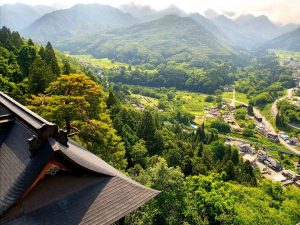
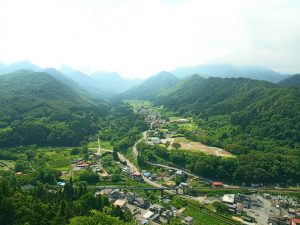
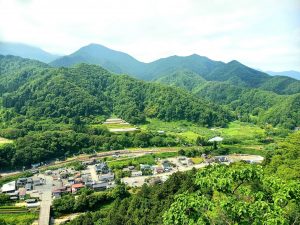
I finally made it to the top to see the sight everyone comes to see, to overlook everything beneath Yamadera and take it all in. I stayed up there for a while and just stared into the mountains, dreading the trip down. Above are a few photos I took of the view, but the pictures are not doing it no justice. The view is truly magnificent, and the details visible to the eye from that distance are amazing. You can watch the train ride by (which it does not often do in this town), and see the townsfolk the size of ants going about their daily lives.
